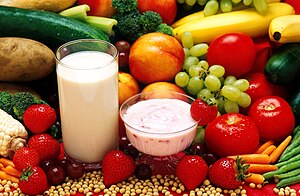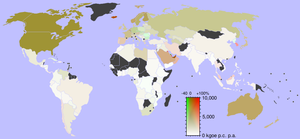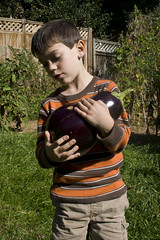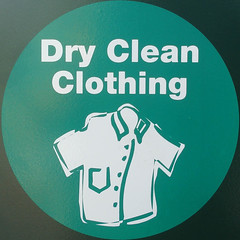 Image via WikipediaBeans (legumes), berries (especially blueberries), broccoli, green tea, nuts (especially walnuts), oranges, pumpkin, salmon. soy, spinach, tomatoes, turkey, whole grains and oats, and yogurt can all help stop and even reverse diseases such as hypertension, diabetes, Alzheimer’s, and some forms of cancer. And where one might have an effect on a certain part of the body, it can also affect the health of other body functions and performance, since the whole body is connected. With these 14 foods as the base of a balanced, solid diet, weight loss gimmicks and other fly-by-night programs can become a thing of the past in your life.
Image via WikipediaBeans (legumes), berries (especially blueberries), broccoli, green tea, nuts (especially walnuts), oranges, pumpkin, salmon. soy, spinach, tomatoes, turkey, whole grains and oats, and yogurt can all help stop and even reverse diseases such as hypertension, diabetes, Alzheimer’s, and some forms of cancer. And where one might have an effect on a certain part of the body, it can also affect the health of other body functions and performance, since the whole body is connected. With these 14 foods as the base of a balanced, solid diet, weight loss gimmicks and other fly-by-night programs can become a thing of the past in your life.Conversely, the ill-effects of an unbalanced diet are several and varied. Low energy levels, mood swings, tired all the time, weight change, uncomfortable with body are just a few signs that your diet is unbalanced. An unbalanced diet can cause problems with maintenance of body tissues, growth and development, brain and nervous system function, as well as problems with bone and muscle systems.
 Image via WikipediaSymptoms of malnutrition include lack of energy, irritability, a weakened immune system leading to frequent colds or allergies, and mineral depletion that can trigger a variety of health concerns including anemia.
Image via WikipediaSymptoms of malnutrition include lack of energy, irritability, a weakened immune system leading to frequent colds or allergies, and mineral depletion that can trigger a variety of health concerns including anemia. And since the body is connected, realizing that an unhealthy body will result in an unhealthy spirit only makes sense. When we nourish our body with these superfoods and complement them with other nutrient-dense and healthy fresh foods, our spirit will be vitalized and healthy as a direct result.
Many modern diets based on prepackaged convenience foods are sorely lacking in many vitamins and minerals, which can affect our mental capacities as well, and cause irritability, confusion, and the feeling of ‘being in a fog’ all the time.
Superfoods can be the basis of a sound, healthy, nutritious solution to curing many of these ailments and more.
For more on superfoods, including many tasty recipes, visit our Cooking From Scratch blog!

































